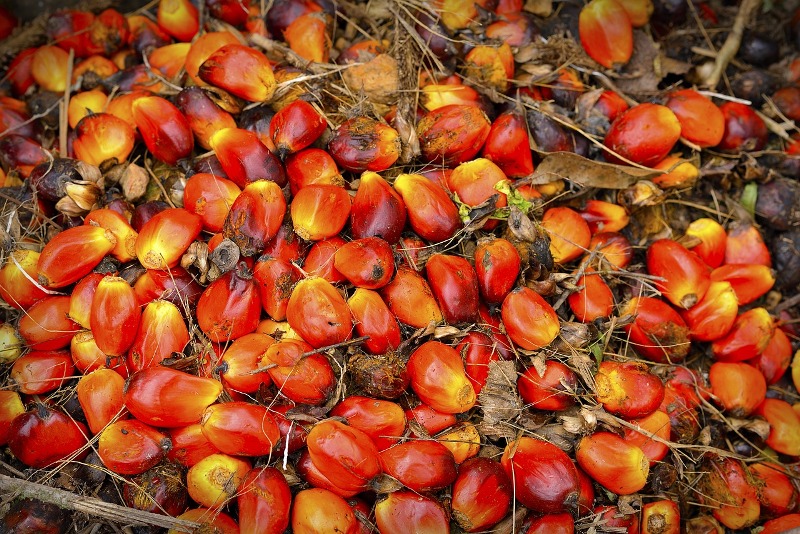By Ravi Chellam
The push for large-scale monoculture plantations of oil palm is taking a toll on the environment and on people’s economic and social security.
In late July, an unusual newspaper headline did the rounds: “If India gives land, we will work together to produce palm oil here, says visiting Malaysian Minister.”
Foreign politicians do not often ask the country they are visiting to give land, in particular for cultivating a plant which produces oil seeds.
In this case, the seeds refer to the oil palm, a species native to West Africa and now widely cultivated, especially in Southeast Asia. Oil palm is seen as the world’s most important oil crop, supplying approximately 40 percent of global demand for vegetable oil.
Clearly, the pressure is building on big palm oil-producing countries such as Malaysia and Indonesia to clean up their act.
The European Union has taken a strong stance on cleaning up supply chains to prevent deforestation, environmental degradation and negative impacts on local communities.
India is the world’s largest importer of edible oils but this was not always the case.
Indians have traditionally used a wide variety of edible oils, a reflection of India’s rich agro-ecological heritage and cultural diversity. In the early 1990s, India was self-sufficient in edible oils but thanks to changes in government policies, that situation has reversed.
Palm oil now dominates India’s edible oil imports, representing more than half of all edible oil imports. In 2021, palm oil import was valued at approximately $US8.63 billion.
Due to this significant dependence on imports, there has been a strong push by the Indian government to rapidly increase the cultivation of oil palm, especially in India’s northeast, through the National Mission on Edible Oils — Oil Palm.
It has set ambitious goals to increase the area of oil palm cultivation in India to one million hectares by 2025-26 from 350,000ha in 2019-20.
However, the government’s efforts in promoting oil palm plantations in the northeast, which are strengthened by substantial subsidies, are playing havoc with tribal society.
Land is a scarce resource in the northeast and existing land, often community-owned and managed, has traditionally been used for subsistence farming with an eye on food security. This is changing and creating social disruption.
Challenges of growing oil palm
More than 50 percent of the proposed increase in the area of cultivation, 328,000ha, is planned in the northeastern states, as identified in an assessment by the Indian Institute of Oil Palm Research in 2020.
The plan is also to increase the production of crude palm oil from 27,000 tonnes in 2019-20 to 1.12 million tonnes by 2025-26.
While the ambition and goals of the oil palm mission are lofty, the on-the-ground situation in the northeast tells a completely different story.
Mizoram was the first state to start planting oil palm in the northeast. Plantations were established in seven districts of the state and at least some of these date back to 2005.
Over the last two decades, oil palm plantations have invariably resulted in setbacks and failures for everyone involved.
Given their intrinsically high requirements of water and nutrients, oil palm plantations have devastated soil health and the quality and availability of groundwater in the state.
Another issue is the long gestation period of the crop. The oil palm takes at least four to five years before it starts producing fruit, followed by a productive period of 20 to 25 years.
This adds up to 25 to 30 years, a long time to lock in precious land resources, especially in a densely populated country such as India.
The challenges with environmental sustainability, productivity, transport, failings of the government and corporate behaviour have meant that both farmers and the companies have had to deal with large-scale failures and heavy losses.
The rugged terrain and remote location of the plantations, coupled with the relatively poor road network and the absence of oil mills close to many of the plantations poses severe challenges to the farmers.
The nuts have to be processed within 48 hours, which currently is a logistical nightmare, especially for many small-scale farmers.
Many companies haven’t honoured their commitments to farmers be it on purchase price or timely payments. Government subsidies have also been often delayed.
The land question
Land is the central issue for the palm oil enterprise.
Be it terrain, with hilly terrain not being suitable for oil palm plantations; rapidly depleting soil fertility or reduced access to land owned by small landholders because of the three decade lock-in period.
In several cases, people have had to sell their land due to the extensive financial losses they’ve suffered while cultivating oil palm.
The capture of common lands for planting oil palm by the elite of the society is a large-scale problem, especially in Arunachal Pradesh, another northeastern state.
The fear is that more and more of community land will get converted into at least de facto private property when planted with oil palm due to the decades-long lock-in period.
This dispossession is likely to result in further marginalisation of the poorer sections of society and could potentially lead to social turmoil and conflict.
The problems are many and widespread.
Farmers across the northeast are not readily taking up planting of oil palm as they have started to realise the environmental costs, the meagre and very often delayed economic returns and the three-decade-long lock-in period of their land.
Sikkim and Meghalaya have decided to stay away from planting oil palm.
A recent report seems to indicate that at least some farmers in Arunachal Pradesh are starting to gain benefits from their oil palm plantations. These are still very early days to reach any definite conclusion about the situation in Arunachal, unlike the much longer Mizoram experience.
Since January 2023, researchers have engaged with tribal elders and civil society members in Nagaland which has provided them a close view of how things are playing out for oil palm in the state.
Nagaland seems to be following a similar path to Arunachal Pradesh, with the wealthy consolidating landholdings to establish plantations, resulting in small landholders losing out.
It is clear that oil palm is a capital-intensive and very long-term crop. Deep pockets are required to survive and succeed.
Almost everyone researchers interacted with expressed their disappointment at the delays, reduction or even complete stoppage of payment of the committed government subsidies.
Farmer frustrations
Farmers’ experiences in dealing with private companies that had committed to buy oil palm fruit has been an even greater disappointment.
The purchase price for these bunches is much lower than what was initially indicated and payments are unduly delayed.
Even the picking up of fresh fruit bunches, a perishable commodity which has to be processed within 24 to 48 hours post-harvesting, is poorly coordinated and there is a lack of reliable information and guidance for farmers.
The environmental and social issues associated with oil palm plantations are also playing out in Nagaland, including depleting soils, water shortages, the increasing use of hazardous agro-chemicals, rapidly increasing labour costs, women losing out on employment opportunities and shifts in land tenure and ownership.
Recent fieldwork in Nagaland through meetings and conversations with farmers presents a mixed picture.
Several farmers confirmed their fresh fruit bunches have not been picked up by companies. They believe it might have something to do with the company’s assessment of the quality of the fruit.
This is not in line with the commitment that was made to these farmers and is resulting in tremendous losses for them.
A few others are receiving the government subsidies and their fresh fruit bunches have also been picked up by the companies and they have been paid Rs13 a kilogram, approximately $USD 0.16.
Course correction
The longer-term experience with oil palm hasn’t been good for farmers in India’s northeast both from financial and social perspectives.
When also considering the environmental impacts, it is clear that the push for large-scale cultivation of oil palm in the region is taking a toll on the environment as well on people’s economic and social security.
Government policy would benefit from encouraging local and ecologically-appropriate oil-bearing crops rather than massively supporting oil palm.
Even the government’s own estimates do not predict India gaining self-sufficiency in edible oil by cultivating oil palm in India.
Rethinking this policy may be required so that India can regain self-sufficiency in edible oils, a position we enjoyed not so long ago.
Dr Ravi Chellam is a wildlife biologist and conservation scientist based in Bengaluru. He studied Asiatic lions for his PhD. He is CEO of Metastring Foundation and Coordinator of the Biodiversity Collaborative, a network of institutions engaged in biodiversity science and conservation that have come together to highlight the linkages between conservation, sustainable use of biodiversity and human well-being.
Rupa Chinai, a senior journalist with decades of reporting experience from India’s northeast, has contributed to the article, both through her extensive network in the region and in collating published resources.
Robert Solo is a member of the Naga civil society organisation, Kezekevi Thehou Ba (KTB) which works with communities, the government and the civil society in Nagaland on a wide range of issues. His contribution to this article has been crucial for all the meetings with farmers and the regular flow of information from the field.
Originally published under Creative Commons by 360info™.















